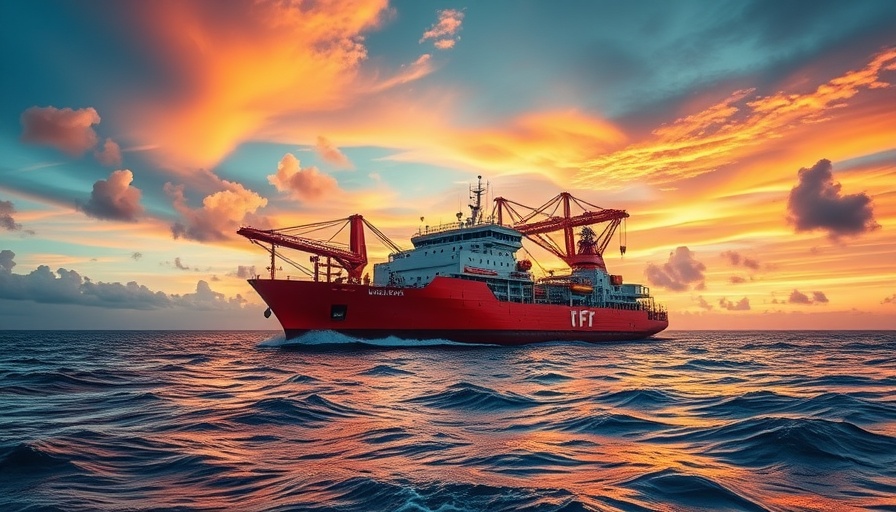
The Last Voyage: Gulf of America's Historic Platform Removed
In a significant move for offshore energy and environmental safety, the Gulf of America has witnessed the removal of its oldest tension leg platform. Known for its pivotal role in the energy sector since its establishment, this decommissioning highlights the changing dynamics of oil and gas production in the region.
The Vessel Behind the Operation
The operation was conducted by a state-of-the-art vessel built in 2014, designed specifically for such challenging tasks. This advanced vessel showcases modern engineering capabilities, employing the latest technologies to ensure safety and efficiency during the platform's removal. As energy companies increasingly prioritize sustainability, the use of specialized vessels points to a transition toward environmentally conscious practices.
Why Tension Leg Platforms Matter
Tension leg platforms (TLPs) are critical in offshore oil and gas extraction due to their stability and ability to withstand harsh marine conditions. However, as technology and regulations evolve, the lifespan of such structures comes under review. With the world moving towards greener energy solutions, decommissioning outdated platforms allows for new developments that align with environmental policies.
Impact on Local Economy and Environment
The removal of this historic platform may spark discussions about the local economy's future. While it signifies a transition in energy production, it also raises concerns for workers and communities reliant on these facilities. Balancing the economic implications with environmental stewardship will be crucial. As cleaner energies become the norm, ongoing dialogue with local stakeholders will ensure that strategies account for job transitions and economic support.
The Bigger Picture: Energy Transition
This event reflects a broader trend in the energy sector where older infrastructures are phased out in favor of innovative and sustainable technologies. As countries aim to meet emissions targets set by international agreements, decommissioning platforms like this one not only fulfills regulatory requirements but also represents a critical opportunity to invest in renewable energy projects.
Looking Ahead: Opportunities in Energy Sustainability
The future of offshore energy is evolving. Companies are not just removing aged structures but also researching renewable resources available within the same regions. Innovations in wind and solar energy present exciting possibilities for utilizing established maritime infrastructures in new ways. Embracing these changes can benefit local economies, reduce our carbon footprint, and pave the way for a sustainable future.
As the Gulf of America embarks on this transition, continued awareness and support for renewable energy initiatives will be vital. Engaging in community discussions about the benefits of these changes helps align economic interests with environmental health. Keeping the momentum going will pave the way for a greener future in energy production.
By prioritizing sustainable practices, we can take significant strides toward a cleaner, more energy-efficient world.
 Add Row
Add Row  Add
Add 




Write A Comment